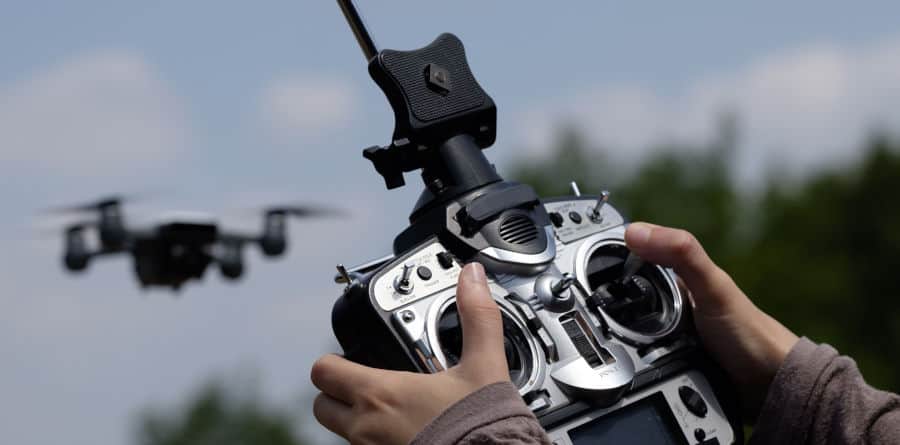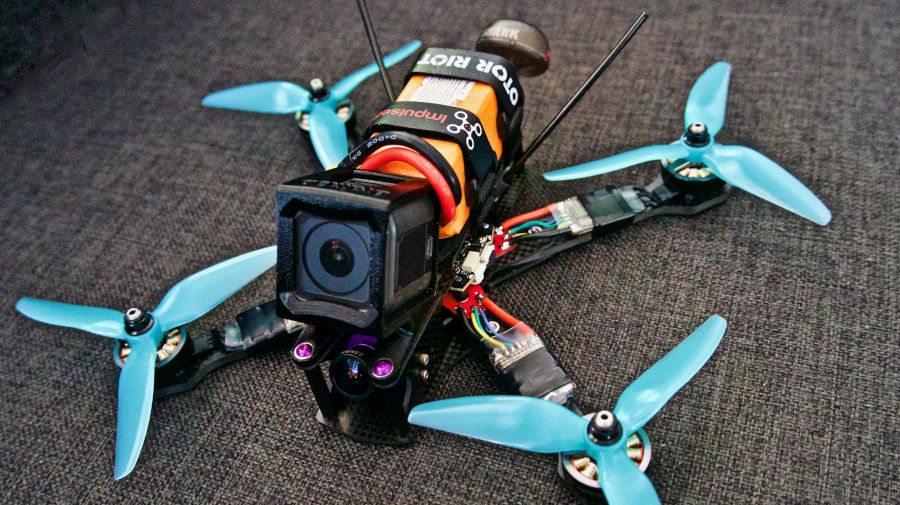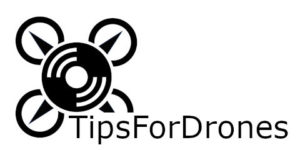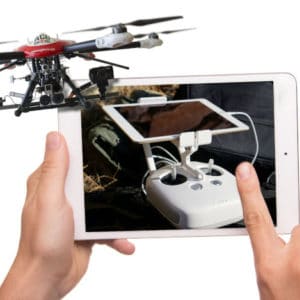A friend of mine said that drones can only fly with a Wi-Fi connection, but I can also use an old radio controller. So, I did some research on the different communications systems that exist and how they work.
Can a drone fly without Wi-Fi? Yes, there are many different communication systems allowing for communication between the drone and a remote controller. Common radio links include Bluetooth, 2.4 GHz (Wi-Fi), 27.12 MHz, 40.68 MHz, and satellite connections for the military. Which system is used depends on the application.
Many new pilots are wondering, which data transfer drones use. Here is a compilation of data transmission systems and what types of data are transmitted.

How do drones communicate with the remote controller?
To control a drone, a signal is sent from the remote controller to the drone. That signal is usually a pulse-position modulation (PPM) signal. This digital pulse tells the drone how much throttle, yaw, pitch, or roll you want. The flight controller translates this signal into control signals for the electronic speed controller of each individual motor.
Your control signal is transformed by the transmitter module into an electromagnetic oscillation. This radio signal is sent by a transmission standard in the air and converted back by the receiver into the control signal.
Generally, the strength and frequency of radio signals are regulated by law. Different frequency bands are defined and reserved for organizations like the police. For the public, various frequency bands are open that can be used to control RC models such as drones.
The most commonly used frequency ranges for radio signals are the industrial, scientific, and medical (ISM) radio bands. These frequencies are regulated by the International Radio Regulations (IRR).
| Frequency Range | Bandwidth | Center Frequency | Allocation |
| 6.765 – 6.975 MHz | 0.03 MHz | 6.78 MHz | Locally Administered |
| 13.553 – 13.567 MHz | 0.014 MHz | 13.56 MHz | Global |
| 26.957 – 27.283 MHz | 0.326 MHz | 27.18 MHz | Global |
| 40.66 – 40.7 MHz | 0.04 MHz | 40.68 MHz | Global |
| 433.05 – 434.79 MHz | 1.74 MHz | 433.92 MHz | Europe, Africa, Russia |
| 902 – 928 MHz | 26 MHz | 915 MHz | Americas |
| 2.4 – 2.5 GHz | 100 MHz | 2.45 GHz | Global |
| 5725 – 5875 MHz | 150 MHz | 5800 MHz | Global |
| 24 – 24.250 GHz | 250 MHz | 24.125 GHz | Global |
| 61 – 61.5 GHz | 500 MHz | 6.250 GHz | Locally Administered |
| 122 – 123 GHz | 1000 MHz | 122.5 GHz | Locally Administered |
| 244 – 246 GHz | 2000 MHz | 245 GHz | Locally Administered |
The transmission standard is the way in which the information is bundled and transmitted. Different transmission standards can be used for one frequency band. For example, Bluetooth and Wi-Fi use the same frequency range of 2.4 – 2.5 GHz.
The most important transmission standards are the following:
Bluetooth: Some tiny drones for kids uses Bluetooth for data transmission. The outdoor range is 110 yards (100 m). Interference can be caused by Wi-Fi or microwave ovens. There are also controllers available, which transmit the data to the mobile phone via Bluetooth, and the mobile phone then communicates via Wi-Fi to the drone.
Wi-Fi: Most commercial drones as a set (drone, camera, battery, and remote control) are controlled in combination with a mobile phone. Thus, the Wi-Fi standard is used to control the drone and to transmit the video signal from the drone to the pilot. Realistic ranges of radio transmission by mobile phone are 220 – 330 yards (200 – 300 m). Some remote controllers can also reach ranges of up to 1 mile (~ 2 km). This depends on the geographical conditions (mountains, forest, or open field) and on the occupancy of the frequency band. When your drone reaches the limit of the communication range, first, the video signal is usually disturbed. Keep in mind the local legal regulations regarding the removal of the drone.
DSSS or FHSS: Direct-sequence spread spectrum (DSSS) and frequency-hopping spread spectrum (FHSS) are standards for an expensive radio remote controller. You can use the same remote control for different drones, aircrafts, ships, or cars. A common range for a remote control using DSSS or FHSS is 1 mile (~ 2 km).
27.12 MHz or 40.68 MHz: In this frequency band, analog data transmissions to control drones are common. Above all, one should be careful to separate the video signal from the control signals. For example, one could use a 2.4-GHz video transmission and 40.68-MHz analog control signals. (You can also use a 5.8G-Hz video signal and a 2.4-GHz control signal.)
How do drones send video to you, and what is FPV?

Videos are generally sent by 2.4 GHz or 5.8 GHz. These frequency bands allow high transmission rates. The most common transmission standards are Wi-Fi or the analog PAL or NTSC standard. Everything else is the same as when transmitting the control signals.
FPV (first-person view) is a method to fly a drone from the pilot´s viewpoint. Via an onboard camera, the video is transmitted wirelessly to the remote pilot to video FPV googles or a monitor. If you use a gimbaled camera, you can connect the gyroscope sensor in your goggles with the gimbal and control it with your head movements.
FPV races are very exciting. In these races, small drones with non-gimbaled cameras are used to fly through a track parallel to one another. These drones are the fastest on the market. Flying such drones in the FPV mode requires a lot of practice and great situational awareness.

Do I have to have a smartphone to use a drone?
In the field of small hobby drones, more and more, Wi-Fi is used for data transmission. In this case, mobile phones are used as a display for video transmission. The more professional the drones become, the larger the drones, displays, and remote controls, and thus mobile phones are no longer needed.
For some flight controls, the flight parameters can be set. These use a Bluetooth or Wi-Fi connection to the mobile phone, and the parameters can be changed directly in flight. In this case, for example, the sensitivity can be set to the reaction of control signals.
Do I need internet to fly a drone?
No, you do not need internet to control a drone. The Wi-Fi connection is only used for the data transmission to and from the drone. The only situation where you might need internet is if you want to use maps. Maps for flying a drone are generally used in combination with autopilots. The software uses your current location to download the maps in your area. You can also bypass this and download the maps at home and use them offline locally.
How far can a drone go?
That depends on the transmission standard you use. Bluetooth, for example, has a range of 110 yards (100 m), Wi-Fi has a range of 220 – 330 yards (200 – 300 m), and DSSS or FHSS has a range of 1 mile (~ 2 km). There should always be visual contact with the drone, because transmitted video signals can easily fail.
What is an interference?
An interference is a superposition of waves, in our case, electromagnetic waves. When two waves of similar frequency and amplitude meet, they interact. If a wave trough meets a wave crest, they cancel each other out and the information is erased. When a wave crest meets another wave crest, the electromagnetic waves add up and the information overlaps. In both cases, the data transmission is disturbed. Thus, a drone should not be flown by Wi-Fi in a residential area with many home Wi-Fi connections. This could lead to disturbances in the control signals.

